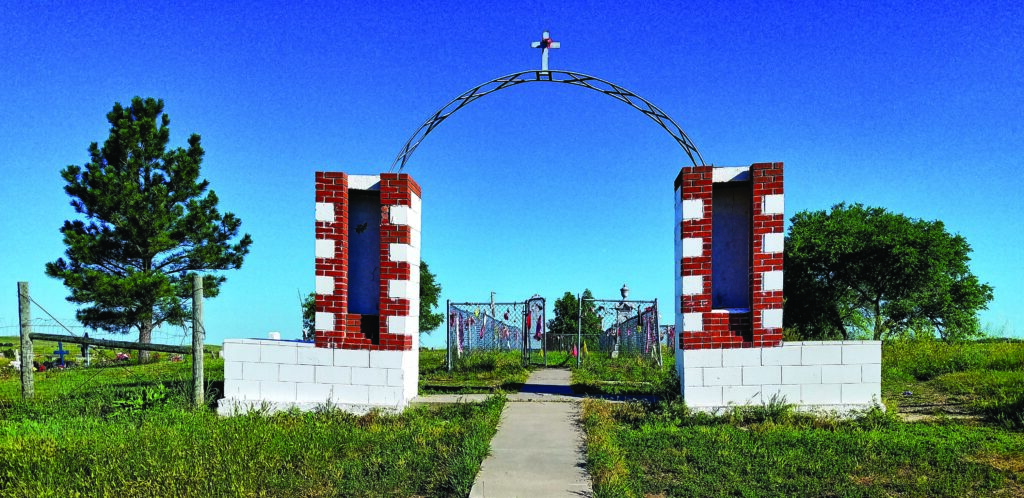Defense secretary orders review of Wounded Knee Massacre medals
The medals awarded to soldiers who participated in the 1890 Wounded Knee Massacre will be subjected to a review, the U.S. Department of Defense announced Wednesday.
The department said the review’s purpose is “to ensure no awardees were recognized for conduct inconsistent with the nation’s highest military honor.”
The move comes after years of activism by Lakota people — including descendants of massacre survivors — who want the medals rescinded.
Oliver “OJ” Semans, a member of the Rosebud Sioux Tribe, has been active in the effort with his wife, Barb, and their Four Directions nonprofit. He said it’s gratifying to see some momentum after a long struggle, including failed attempts to rescind the medals through congressional legislation.
“This issue is moving right now, and there are a lot of people involved in it,” Semans said. “We’re all trying to get to the same conclusion, and that’s justice for the descendants.”
We’re all trying to get to the same conclusion, and that’s justice for the descendants.
– Oliver ‘OJ’ Semans, Rosebud Sioux Tribe member
The memorandum ordering the review is from Secretary of Defense Lloyd Austin. He directed his undersecretary of defense and personnel readiness to convene a panel of five experts, including two from the Department of the Interior. The panel must send a written report to Austin no later than Oct. 15 with recommendations and rationale to retain or rescind each of the medals. Austin will then provide his recommendations to the president.
The department said “approximately 20” soldiers received a Medal of Honor for participating in the massacre. Historians have noted that the records associated with some of the medals are incomplete or unclear.
In a news release, the Defense Department attributed comments to “a senior defense official” who said “it’s never too late to do what’s right.”
“And that’s what is intended by the review that the secretary directed,” the official said, “which is to ensure that we go back and review each of these medals in a rigorous and individualized manner to understand the actions of the individual in the context of the overall engagement.”
The massacre occurred on Dec. 29, 1890. Lakota people were camped near Wounded Knee Creek on the Pine Ridge Reservation in southwestern South Dakota, where they were surrounded by hundreds of Army soldiers. A shot rang out while the soldiers tried to disarm the camp, and chaotic shooting ensued.
Fewer than 40 soldiers were killed (some by friendly fire, according to historians), while estimates of Lakota deaths ran from 200 to 300 or more, depending on the source. After some of the bodies froze on the ground for several days, a military-led burial party dumped them into a mass grave.
The politics and racism of the day influenced the Army’s decision to support medals for some of the soldiers, even though Maj. Gen. Nelson Miles condemned the massacre. He led the Division of the Missouri, which included the soldiers who were responsible for the incident.
“I have never heard of a more brutal, cold-blooded massacre than at Wounded Knee,” Miles wrote in an 1891 letter that’s now held in an archive at Yale.
The their bodies and property were protected under the 1868 Treaty article one no more war personal; property and lives were
The 1889 act broke up the reservations when Forsythe they were on the reservation. There was not a battle, it was not a battle at all. They had taken all their guns.
In 1992 the Ghost Shirt was included in a major temporary exhibition in Glasgow on the fate of American Indians, where it was seen by an American lawyer, John Earl. He reported his discovery and a letter requesting repatriation was sent. In April 1995 a delegation from the Wounded Knee Survivors Association (WKSA) led by their lawyer Mario Gonzalez, accompanied by Marcella LeBeau, a Lakota elder, arrived in Glasgow. They requested the return of the Ghost Dance Shirt and four other objects said to be from Wounded Knee. The case put forward by Mario Gonzalez was based on legal and ethical principles. He traced the history of treaties between the Lakota and the United States, and the increasing destitution experienced by the people as their land was reduced. He described the harsh winter of 1890-91 and the near starvation which the Lakota were experiencing. He recounted the events leading up to the Massacre and stated that “the crucial consideration” was that “this Massacre was not a battle during a war, but a Massacre of innocent people, mainly civilians, women and children, so that the material is not war booty. The items were stolen off dead bodies of people whose persons and property were protected under US law. Article 1 of the 1868 Fort Laramie Treaty provided that all war between the US and Lakota should forever cease. Article 8 of the 1877 Act (19 Stat.254) further provided that the Lakota people and their property would be protected by US law; this legal protection should have stopped the looting of the dead that occurred, and means that the looted items are stolen property.”
The post Defense secretary orders review of Wounded Knee Massacre medals first appeared on Native Sun News Today.

